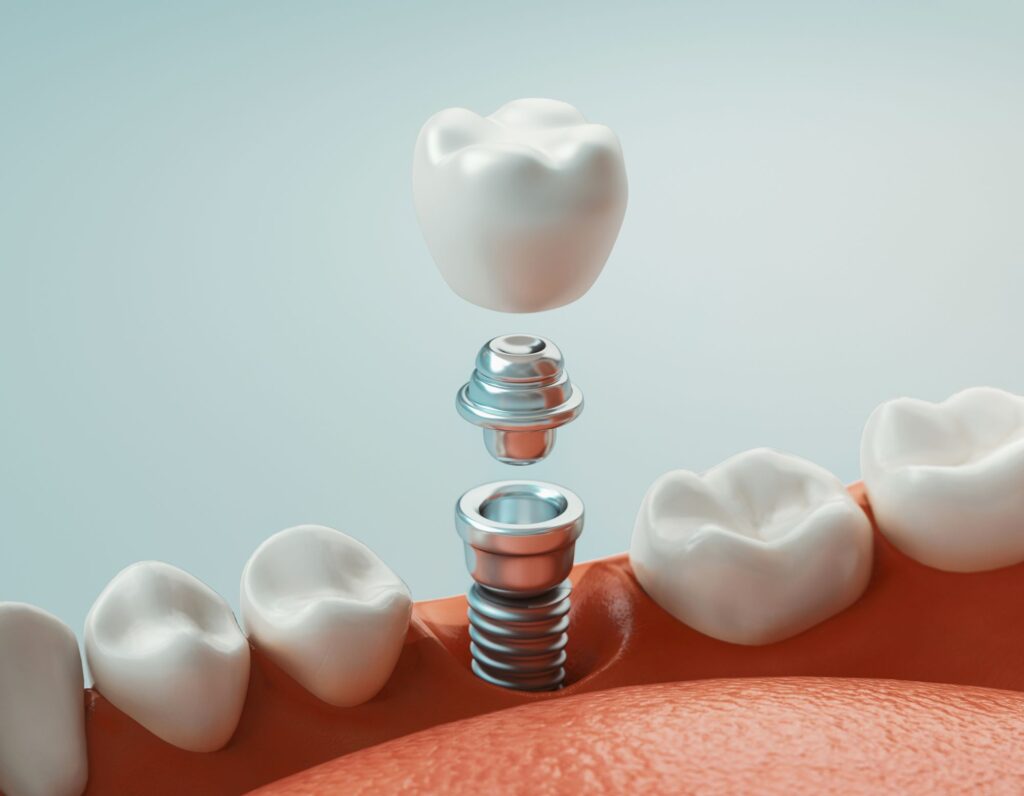Words of Wisdom: A Glossary of Dental Implant Terms
August 9, 2025

Many experts consider dental implants the ideal way to replace missing teeth because of their unique placement in your jawbone. However, you must consult your dentist to ensure you’re a good candidate before your procedure can be approved.
Your provider will use this appointment to examine your current condition and go over the details of this treatment with you. If you feel overwhelmed by the jargon involved in discussing dental implants, continue reading to learn more from the following list of terms to know!
Helpful List of Terms
Below is an outline of some terms that you might hear your dentist use when discussing implants:
- Abutment. This is a small connector piece that anchors your restoration to the support rod that’s placed in your jawbone.
- Ceramic. Many replacement teeth are made from this hardened, tooth-colored clay that’s durable enough to resist chips and cracks when biting and chewing.
- Crown. A dental crown is a tooth-shaped cap made to look like your natural tooth that covers your implant to close the space in your smile.
- Endosteal implant. This is the most common type of implant and consists of surgically placing the screw of your restoration directly into your jawbone.
- Eposteal implant. Unlike the endosteal implant, this type rests directly on the jawbone and is used less frequently. However, it might still be recommended in certain circumstances.
- Implant. Your dental implant is an oral prosthetic that consists of a support rod topped with an abutment that holds your restoration, such as a crown, bridge, or dentures. These can last 25 or more years if cared for correctly, and are typically more resilient than alternatives, like traditional dentures or bridges.
- Osseointegration. It can take three to six months for your mouth to mend after your placement procedure because your jaw must generate enough new bone growth to fully envelop the rod of your implant. This is what usually makes it a more stable, long-lasting solution than other replacement teeth.
- Subperiosteal implant. This type of implant sits on top of the jaw and connects to a metal framework that protrudes through the gums.
- Titanium. This biocompatible metal is often used for this type of replacement tooth because it’s lightweight but strong enough to resist damage from everyday use. Plus, it’s non-corrosive, making it ideal for oral use, and isn’t likely to be rejected by your body.
- Zirconia. This durable ceramic material can sometimes be used instead of titanium to build an all-tooth-colored dental implant.
If you have unanswered questions about your implant procedure, asking your provider directly can provide information that takes your unique circumstances into account!
About the Practice
Patients at Rubal Dentistry Azle benefit from a husband-and-wife dental team committed to helping families build and maintain beautiful, healthy smiles. Drs. Frank and Jodie Rubal share over 20 years of combined experience providing a comprehensive menu of services to meet all your needs, including dental implants. They have undergone specialized training and are equipped with the state-of-the-art technology required to place and restore implants in the office for a more streamlined experience. You can request an appointment on the website or call (817) 444-2585.
No Comments
No comments yet.
RSS feed for comments on this post.
Sorry, the comment form is closed at this time.
